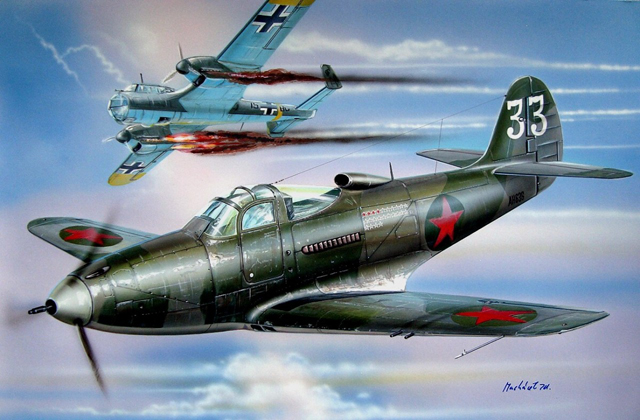KUBAN STAIRS: Russian Front 1943

KUBAN STAIRS: Russian Front 1943
The roots of the Kuban campaign stemmed from the disaster of Stalingrad in the winter of 1942-43. German forces in the Caucasus began to withdraw and consolodate their defensive positions in early 1943. The German 17th Army constructed defensive positions across the Kuban river delta east of the Crimea. The 'Kuban brideghead' became important to both sides. For the Germans it protected the eastern approaches to the Caucasus and for the Soviets it was viewed as a launch point for further German attacks.
The campaign marked the resurgance of the Soviet Air Force. For the first time since 1941 the VVS had the strength to seriously oppose the Germans. The Soviet 4th and 5th Air Armies were tasked to support the North-Caucasus Front responsible for the Kuban. Many fighter aviation regiments were equipped with Lend-Lease fighters including the P-39 "Kobra" which was to become the most popular western fighter in VVS service. Opposing them was Luftlotte 4 which included the veteran fliers of JG 3 and JG 52 flying the Bf 109G.
During April and May 1943 the Germans and Soviets fought a series of heavily contested battles in the Kuban. The Luftwaffe and the Soviet Air Force fought some of the most intense air battles of the Eastern Front as each side sought to dominate the skies over the battlefield. In the end neither army was able to dislodge the other and the campaign ended in stalemate in early June. The Soviet Air Force claimed 1,100 German aircraft destroyed to the Luftwaffes 2,280 claimed victories. Although the Luftwaffe destroyed more aircraft they were hard pressed to make up for the own losses of planes and veteran aircrews. The tide of the air war had turned in the Soviets favor and the strength of the Luftwaffe would continue to decline as the war progressed.
Many Soviet aces made names for themselves including Kapitan Aleksandr I. Pokryshkin of the 16th Guards Fighter Aviation Regiment. Known as the "father of Soviet fighter aviation" he claimed 25 victories over the Kuban in a four month period. He is also credited with developing the "Kuban Stairs" tactic of flights staggered one on top of the other where the covering fighters would initiate a high speed diving attack on the enemy.
This FSO recreated the air battles over the Kuban in the spring of 1943.
Country Percentages:
Axis 45%
Allied 55%
Field Assignments:
Axis Knight
Allies Bishop
CM Rook
OOB:
Axis (Luftwaffe):
Bf 109G-2
Bf 109F
Ju 87D
Ju 88A
Soviet (VVS):
P-39D (min 24)
Yak-7
IL-2 Sturmovik
B-25C
Special Rules and Ordnance Restrictions:
* All aircraft must be used by a minimum of 12 *players*.
* Strike planes must attack their targets by T+45.
* Objectives must be defended by 24 *players* min.
* Drop tanks are disabled for all aircraft.
* Air-ground ordnance is disabled for all fighters.
* The B-25 has the strafer option disabled.
* ALL AIRCRAFT ARE TO BE LANDED AND THE PLAYERS TOWERED OUT BY FRAME END OR WILL BE CONSIDERED SHOT DOWN AND THE CREWS KIA.
Scoring:
Aircraft Pts
------------
Bomber = 10 pts
Fighter = 5 pts
Attack = 5 pts
Target Pts
----------
Gun = 0.5 pts
Hangar = 25 pts
Cruiser = 100 pts
Destroyer = 50 pts
All Other = 3 pts
Survival Pts
------------
Landing = 2 pts
Pilot Survival = 2 pts
Arena Settings:
- Black Sea terrain
- Fuel burn 1.0
- Icons friendly 3k/enemy 3k
- 0.3 Ack
- Fighter and Bomber warning range 42,000 (about 8 miles)
- Tower range set to 42,000 (for display only to match the above setting)
- Haze/fog full visibility (17 miles)
- Radar off
- Enemy collisions on
- Friendly collisions off
- Killshooter off
- Time: 15:00 ( 3PM ) Game Clock
- Formations: On
- Formation Autopilot: On
- Bomber calibration: Automatic
- Wind: 0K-18K SE TO NW - Speed 5
18K+ SE TO NW - Speed 10
Designer's Notes:
Design by Warloc